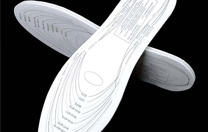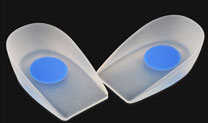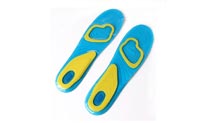As a shock-absorbing material, it has a strong ability to absorb impact energy, and at the same time, it has very little resilience to the pressure material (or human body) that it contacts. And this rebound force of cushioning material is the direct cause of injury to the protected object or body in high impact situations. As a mat material, it is subjected to a pressure that approximates a static pressure. Under such pressure, the molecular structure of the memory foam foot pads undergoes a "flow" displacement, which deforms to fit the contours of the pressurized surface and spreads the support point over the entire contact surface, allowing the pressure to be dispersed over the entire contact surface. This feature is known as the "property of uniform dispersion pressure " of memory foam. When a person sits or lies on a memory foam cushion, the pressure is dispersed, so there is no pressure concentration point in the body, which greatly enhances the comfort. And the problem of bed sores caused by blood circulation blockage due to prolonged high pressure is also well prevented. With special modifications, the material also has a soft touch that is even better than ordinary sponges. At the same time, the open-cell molecular structure of the material is similar to that of the human cell structure and is compatible with the human body, which makes the memory cotton material widely used in the field of medical rescue. At the beginning of the 21st century, memory foam began to be used in the shoe industry and gradually became a unique use of high-end footwear. Memory foam foot pads are very widespread in the use of insoles; they are significantly better than other materials in terms of shock absorption and have an excellent comfort.



